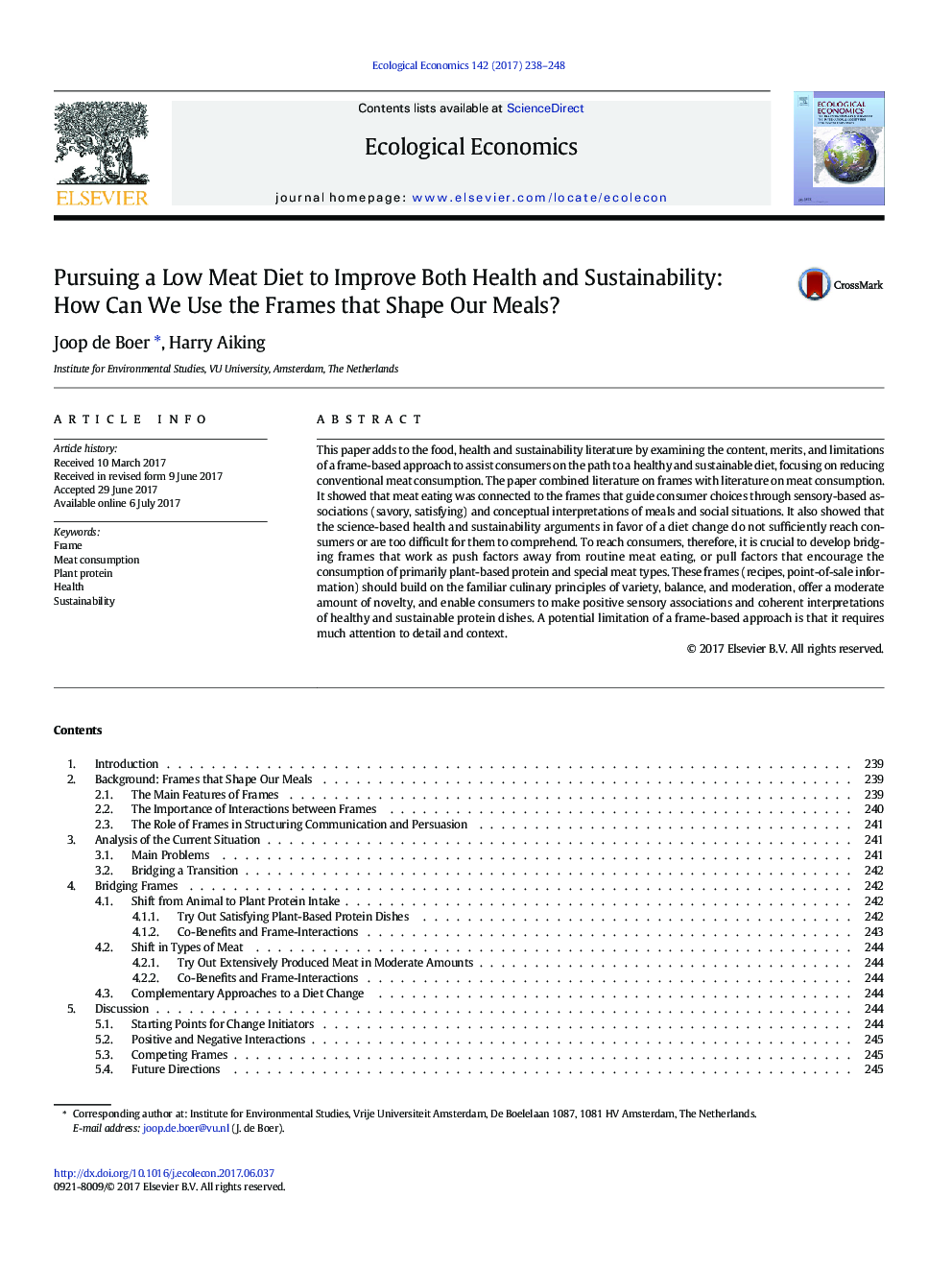| Article ID | Journal | Published Year | Pages | File Type |
|---|---|---|---|---|
| 5048529 | Ecological Economics | 2017 | 11 Pages |
This paper adds to the food, health and sustainability literature by examining the content, merits, and limitations of a frame-based approach to assist consumers on the path to a healthy and sustainable diet, focusing on reducing conventional meat consumption. The paper combined literature on frames with literature on meat consumption. It showed that meat eating was connected to the frames that guide consumer choices through sensory-based associations (savory, satisfying) and conceptual interpretations of meals and social situations. It also showed that the science-based health and sustainability arguments in favor of a diet change do not sufficiently reach consumers or are too difficult for them to comprehend. To reach consumers, therefore, it is crucial to develop bridging frames that work as push factors away from routine meat eating, or pull factors that encourage the consumption of primarily plant-based protein and special meat types. These frames (recipes, point-of-sale information) should build on the familiar culinary principles of variety, balance, and moderation, offer a moderate amount of novelty, and enable consumers to make positive sensory associations and coherent interpretations of healthy and sustainable protein dishes. A potential limitation of a frame-based approach is that it requires much attention to detail and context.
